Are you failing to reach your target audience on social media? Does your marketing strategy flop, no matter what you try?
Maybe it’s time for a different approach. Maybe it’s time for cold calling — a way to contact customers directly and let them know exactly how your solution can help resolve their problems.
But, calling someone you don’t know out of the blue just to tell them how great your product is can easily irritate them. Do it right, though, and a cold call is a great tool in any business’s arsenal.
So, let’s see what cold calling is, as well as some examples and tips on how to make a perfect cold call.
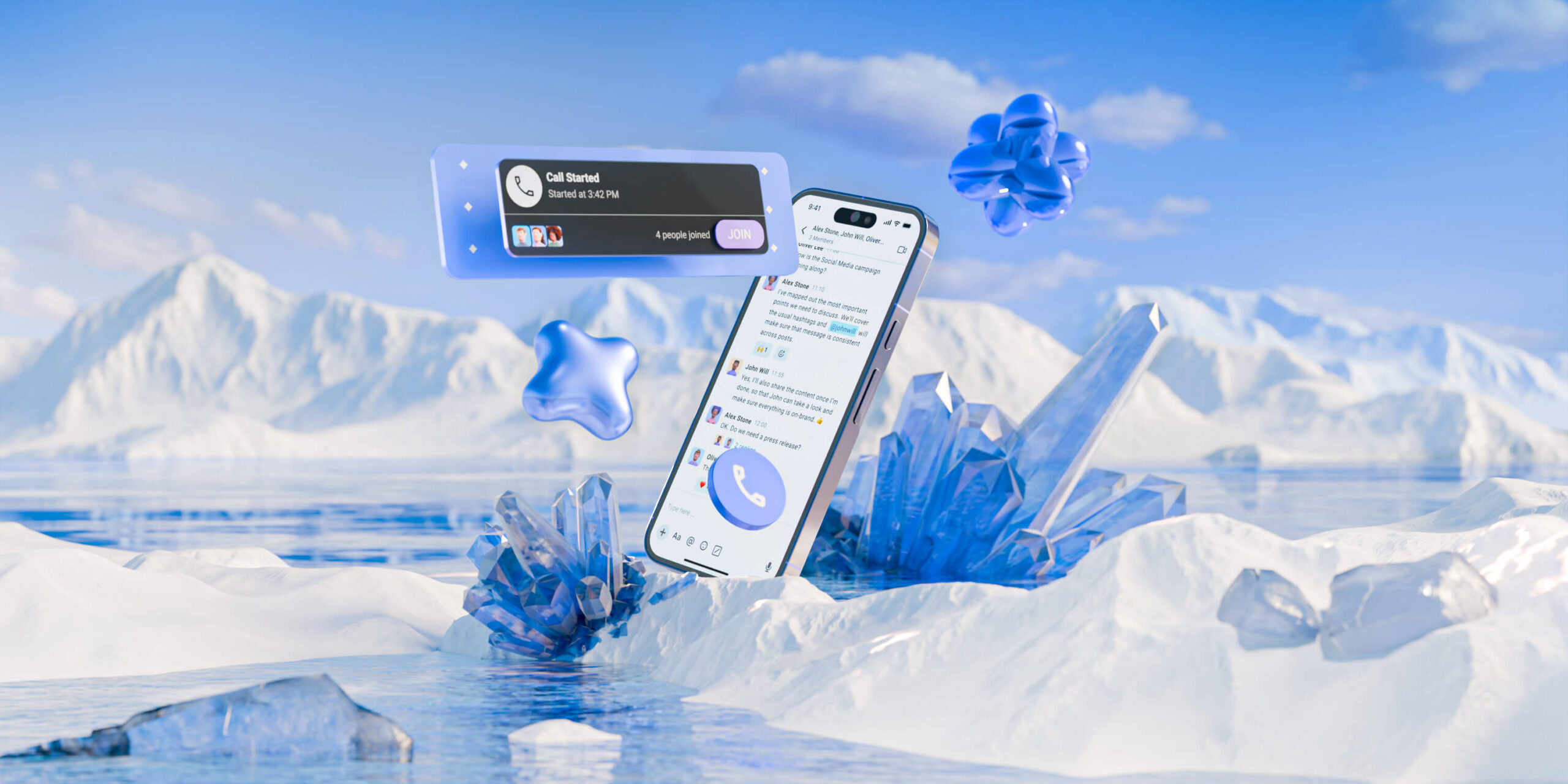
In this article:
What is cold calling?
Cold calling is the practice of calling a customer who has never had an interaction with the salesperson or product they’re trying to sell. The term covers both phone calls and door-to-door interactions.
Cold calling has experienced a decline in recent years because of the decrease in landlines and the increase of scammers using the technique. However, even though it’s challenging, it is still a valid sales technique.

Cold calling vs warm calling
Cold calling and warm calling are both sales techniques that entail calling up someone unexpectedly.
However, in a warm call, the customer has previously shown interest in the type of product or service that you’re trying to sell. So, you’ll approach the call differently, as you already know they’re experiencing a pain point you can help with.
For this reason, warm calls generally have a higher success rate.
💡 Plaky Pro Tip
Whether you rely on cold calling or any other sales technique, it’s good to have your sales processes organized. Here are some resources that might help you:
How to cold call: 10 expert tips on cold calling
While cold calling is difficult, the upside is that experience makes it easier. In time, as you listen to your potential customers, you’ll naturally understand what kind of approach gets a positive reaction.
As experience makes an effective cold caller, we’ve asked experts to share their best tips.
#1 Practice active listening
The purpose of a product or service is to resolve a problem that a customer has. So, treat your customer like a person with a problem that needs to be heard.
We spoke to Eric Watkins, a seasoned salesman since 2014, who says active listening is the best practice every salesperson should master:

“We know that salespeople are Chatty Kathys and love engaging with others; however, without active listening, you risk ineffective conversations with key decision-makers that could have resulted in high-earning business deals.”
Put your customers first — the best way to get them talking is by asking questions. However, Watkins warns that some questions are better than others:

“Ask open-ended questions. If you don’t ask open-ended questions, you won’t have anything meaningful to listen to.”
#2 Discover pain points and pitch accordingly
As Watkins puts it, it’s up to you to figure out your customers’ problems and how your product can solve them:

“When you discover a prospect has pain points with their current service provider, you have more of an opportunity to strongly pitch prospects and get them to agree to an appointment with your company.”
After you discover the issue, you need to focus on how your product provides relief to that pain point:

“In return, this encourages them to actively listen to what your company has to offer.”
For example, say you’re pitching a TV service provider and that, during the conversation, you learn that the customer lives in a remote area and is experiencing reception problems.
Though having lots of channels is a great advantage, that’s not the feature you should focus on here.
Instead, you should focus on your state-of-the-art satellite service, assuring them they’ll get a signal wherever they are — because that’s the problem they’d want to resolve.
#3 Review previous calls
In every job, it’s important to learn from your mistakes. This goes double for cold calling.
As Tom Snyder, who’s been helping companies increase sales performance for 10+ years, tells us, you should understand the context and review information on previous calls:

“Using call recordings as a part of training materials allows you to break down the steps second by second to understand what works and what doesn’t in your industry.”
Cold calling can be stressful in its own right, so it’s easy to miss important details while on the call itself. Reviewing previous calls and taking notes on what worked and what failed can make a significant difference in the future.
Track previous call results in Plaky
#4 Practice with role-play
Mock cold calls can help if you’re new to cold calling and need to get the hang of it, or you’re experienced but want to refine your skills. Snyder suggests pairing sales reps in role-playing sessions to ensure skills are constantly sharpened:

“The more accurately you can set the environment, i.e., separating and using real phones, the more likely the skills will transfer without a hitch when it’s time to conduct actual calls.”
It’s generally good to pair up with a more experienced colleague and have them play the customer. They have more knowledge of what an actual customer would say in a given situation.
Then switch, and while playing the customer, focus on customer phrases or questions that you have issues with. Gaining insight into how a more experienced salesperson would handle those situations should help improve your approach.
#5 Close with a specific date and time
Watkins also talked to us about the danger of closing at the discretion of the prospect — because it makes you seem less confident:

“As you close a prospect, you should always have at least 4 dates or times in the next 2 or 3 days for them to meet with another member of your sales team.”
Let’s say you’re at the end of a conversation with a prospect, and they say they’ll need more time to think about it.
Instead of telling them to call you back when they decide, try saying something like, “Of course, you need time to make an important decision. I’ll call you back in a couple of days. How’s Friday around noon for a follow-up?”
Watkins tells us that this kind of initiative is necessary:

“By doing this, you put the customer in a good spot to think about their availability rather than saying no.”

#6 Focus on the conversation
Don’t aim to sell your product on the first call at any cost. Instead, focus on building a rapport with the customer.
If the conversation ends with them not wanting to buy, that’s alright. If they need time to think about it, are using a different service, or are just not interested — it’s not a big deal.
The most important thing is to establish rapport and pitch accordingly. If your customer feels like they’ve been heard, you’ll stand out from the crowd.
This means the next time the customer needs what you’re selling, you’ll be the first provider they think of. A good sales call can pay off months after it’s finished.
#7 Do your research
Don’t pick up the phone too hastily either. First, research your customers and the market. If you work in B2B, you’ll want to research the business you’ll be calling.
Businesses are often appreciative of the research you’ve put in. It shows a dedication that clients like to see when they’re choosing who to work with.
Plus, you can use that research to your advantage when pitching.
For example, if you work in real estate, and you’re offering a rental of an office building, you could say something along the lines of “I see you’ve been upsizing recently. I was wondering if you’re looking into a larger office to accommodate the increase in staff?”
If you work in B2C, you can’t do much research on a specific customer, but you can research the customer base, answering questions like:
- What are their usual pain points?
- What kinds of services do they require?
- What features are they looking for in your product?
This knowledge will help you establish the focus points in your call.
#8 Nurture your leads
Even if a lead already has a contract with a different company, check in from time to time. Watkins reminded us how important nurturing leads can be:

“It allows you to follow up with prospects regularly to check in and see how things are going with their current provider. This provides top-of-mind awareness for when it comes time to reevaluate their contract. If they are looking to make a change, your company will be the first one that comes to mind.”
Of course, you’ll want to provide new information with every call. For this, you’ll need to keep notes on your prospects and review them before calling. When contacting a lead, you want to avoid repeating the same information every time.
Instead, give value to every call by providing information you haven’t talked about before. This gives justification to every call you make and keeps the prospect interested.
Track lead follow-ups in Plaky
#9 Find a creative opener
First impressions matter. Therefore, in the first few seconds of a cold call, you could gain or lose the prospect’s interest completely.
Make your wording friendly and even humorous — it will help you stand out.
“How are you?” is a perfectly fine opener and will get you some good responses. However, it’s rather generic.
According to Gong.io’s 2024 study of 300 million cold calls, these are the most effective openings:
- “Can I get 30 seconds to tell you why I called?”
- “Have you heard our name tossed around?”
And it makes sense — these are innovative, entertaining, and require attention from your prospect. Here’s one of Watkins’s suggestions:

“Consider using humor to your advantage, by saying something like: ‘I know I probably caught you in the middle of lunch. What’re we eating today?’”
#10 Build a prospect list
Finally, keep building your prospect list — a record of potential customers and their information.
Now, this tip could help you turn your call from a cold call into a warm one — after all, warm calls are generally more effective.
Making a prospect list will save you time and effort — for starters, when you have one, you already know who you’re going to call. Second, there’s a bigger chance they’ll be interested in your product, so you’ll end up with more successful calls.
Say you’re calling to pitch your company’s security system. If you call long-established businesses, chances are they already have one in place (not that there is no value in calling them too, as we saw in tip #3).
However, any new business will probably be searching for a security system. With that in mind, you can use social media to scout potential clients.
And here’s a tip — by doing some research or hiring a data broker (a company that sells information about individuals), you can create a list of clients who are likely to answer and listen to your calls.
Cold calling scripts
Of course, a script isn’t there so that you can read it word for word, but you should have one on hand at all times.
It’ll remind you of the important points you want to mention during the call and give you something to come back to whenever there’s a lull in the conversation.
So, here are some cold calling scripts you can use in your efforts.
Basic cold calling script
This cold calling script is applicable to any kind of solution you provide. There is room to tweak it a bit to fit your niche and business’s needs, but it’s a great starting point for any cold call.
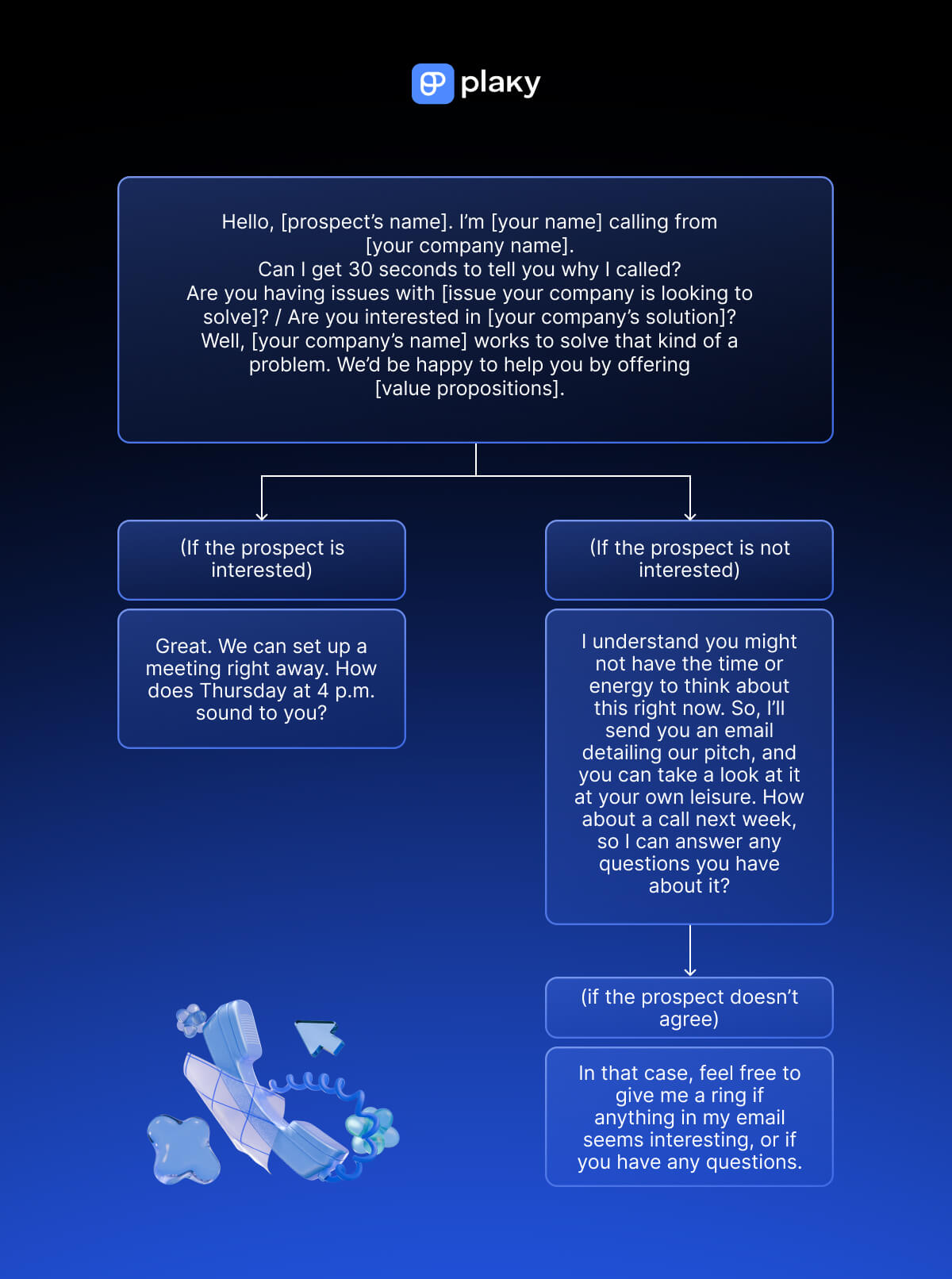

Real estate cold calling script
In real estate, your value proposition could be a number of things since your customers could be looking to buy, sell, rent, etc.
You’ll often need to do research to make a warm call if you’re in real estate, but that doesn’t exclude the necessity of cold calls.

💡 Plaky Pro Tip
If you want to learn more about the real estate industry, you might want to get started with a useful guide and a template:
Sales cold calling script
In a sales call, your focus is more on the solution that you’re selling. However, the friendly tone and conversational atmosphere still apply to these conversations.
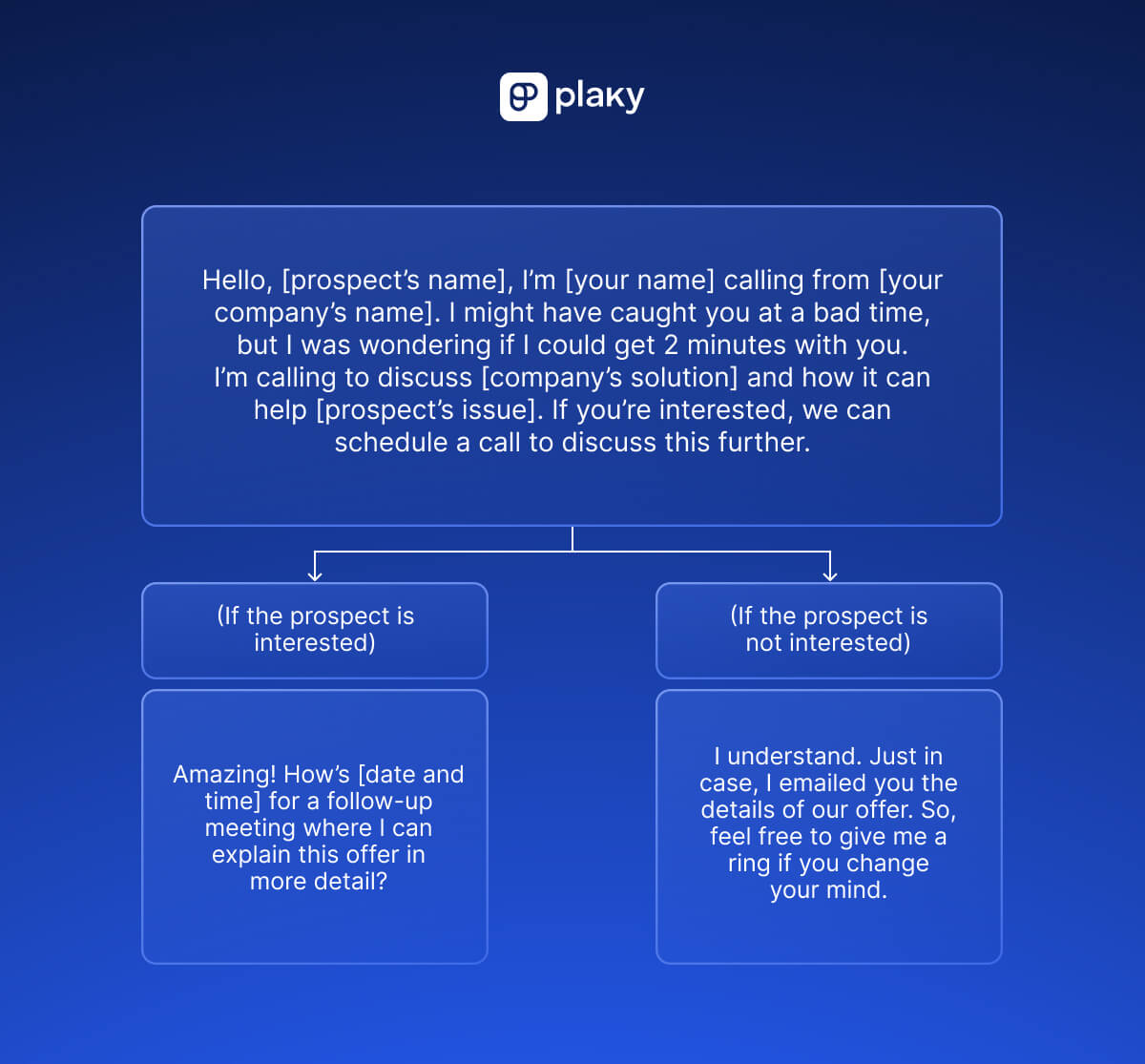
B2B cold calling script
For B2B calls, it’s important to do your research on the business you’ll be calling.
Showing knowledge of the inner workings of the company can give you an edge over other callers. Like we mentioned, clients like to feel appreciated — do your research, and you’ll let them know you’re dedicated.


What are some examples of cold calling?
Let’s fill in some of those scripts and take a look at how some real-life cold calls might go.
#1 The perfect call
Sometimes, you might achieve success on the first try. If you keep a good tone and follow our tips, your call might sound like this:
Hello, Bernadette. This is Mike, calling from House Movers Official. How have you been today?
Hello, Mike. I’m doing fine, making lunch currently. What is this call about?
Early lunch — love it. Actually, I have clients who are looking to move into the neighborhood, so I’m making some calls to see if anybody would like a change of pace. Have you been thinking about moving or changing your residence recently?
As a matter of fact, I have. My children moved all the way to Texas last month, and I’ve been thinking about moving nearer.
Well, congratulations to your kids. Becoming a homeowner is a big step. So, would you be interested in a meeting to further discuss this prospect? I don’t want to take up too much of your time, your lunch might burn.
I’d be very interested, thank you.
Great, how does Monday at 11 a.m. sound to you?
#2 Uninterested customer
Still, most of the time, your conversations might sound like this:
Hi, Peter. This is Layla, calling from BeeMobile. Could I have a minute of your time?
Uh, sure.
How happy are you with your current mobile provider?
Perfectly happy, honestly. I’m not looking to change any time soon.
That’s reasonable. But, being informed can only do good, so would you like to hear about our new package?
Look, I’m really in a rush right now, so I don’t have the time.
I understand. I’ve sent you an email detailing our offer, so if you happen to change your mind, give us a call. If it’s alright, I’ll check in with you in the coming days.
No, it’s alright. I’ll call you if I’m interested.
Alright then, it’s a deal. Bye.
What’s important to note here is that if a customer doesn’t agree to your follow-up, calling them anyway would most likely further aggravate them.
#3 A business already under contract
Here, we’ll be taking a look at a B2B exchange.
Hi, Elias. I’m Helen, calling from Papers, Please. I was wondering if I could get a minute of your time.
Hi, Helen. I do have a bit of time.
Great. I was wondering — since Pleudon is an accounting firm — if you would be interested in connecting with a paper distributor at the moment.
As a matter of fact, we already have a contract with a distributor.
And are you satisfied with their services?
Well, they never sent us any faulty products, and their customer service is great. However, their deliveries tend to be late from time to time. All in all, 50/50.
That’s a shame to hear. I know your printers must be working overtime, so a delay in a necessary resource has to be frustrating. That’s why we at Papers, Please always send our shipments a day early to accommodate unforeseen delivery issues. We work with over 50 companies and haven’t gotten a delivery complaint yet.
That is impressive. Still, like I said, we’re under contract. But we’ll keep you in mind as soon as reevaluation rolls around the corner.
That’s great to hear, thank you so much. In the meantime, I’ll be following up with you if I come across any information you might want to know.
How to use project management software to organize cold calling workflows
Making a successful cold call is an incredible feeling — but then what? You need to follow up, send emails, track client replies, etc.
And worst of all, you can’t keep all of this information in your head. Or even your notebook, for that matter.
It’s best to keep it in a tool that can help you stay organized — project management software. So, let’s see how you can use one to manage your cold calling efforts.
#1 Figure out which inefficiencies you want to solve
Using a PM tool can help you solve all kinds of inefficiencies in your workflow — but you need to know which ones you want to focus on to build a perfect project board.
Some of the most common inefficiencies you can solve with a PM tool include:
- Scheduling conflicts — By tracking which salesperson calls which client, and when clients should be contacted, you avoid overlaps and missed opportunities.
- Learning from previous results — If you use a PM tool to note why your offers were declined or accepted, you can look back on those results and see the areas your sales team can improve in.
- Switching salespeople for clients — When a salesperson takes over a client from their colleague, they might not be able to catch up on all relevant information about their previous calls. In a PM tool, all that info is readily available.
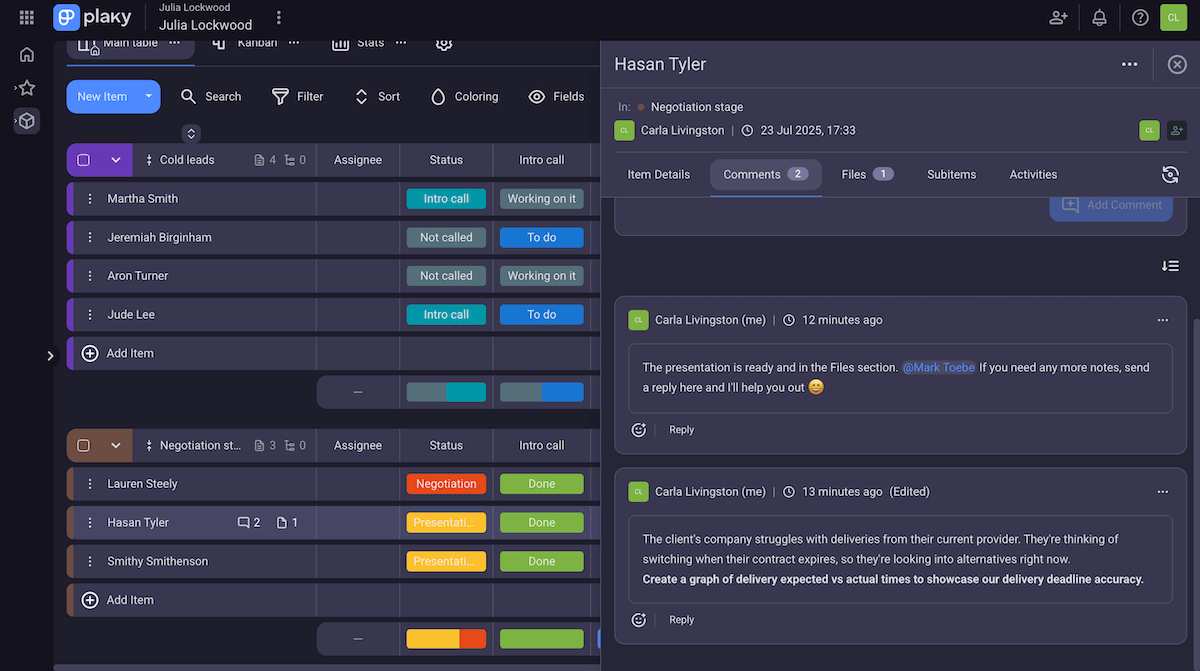
Boost team communication with Plaky
#2 Create a cold call project board
Now that you’ve determined why you need one, let’s see how you can make a cold call project board.
Ideally, the board should show you when your team will contact leads, who will contact them, past contact information, etc. Every task card should be tied to a specific client.
For this purpose, you need custom fields. After all, simple To Do, Doing, and Done status bar options don’t give you enough information, both for current work and future result tracking. Just for starters, you need to be able to note if a sale was successful or not.
The most crucial fields to track specific key points in your sales pipeline are:
- Negotiation progress — a custom status bar that lets you know if you’ve had your first call yet, if you’re negotiating, if the deal is off, etc.,
- Assignee — a person field that shows which salesperson will be the next one to contact this client, and
- Last contacted — a date field that lets you know when the client was last contacted so that you can easily track when to follow up.
There are many more fields you can add — like a Reason lost field that lets you track why clients refuse your offers, or a Contacted over field that marks which method of contact has been the most effective for you.
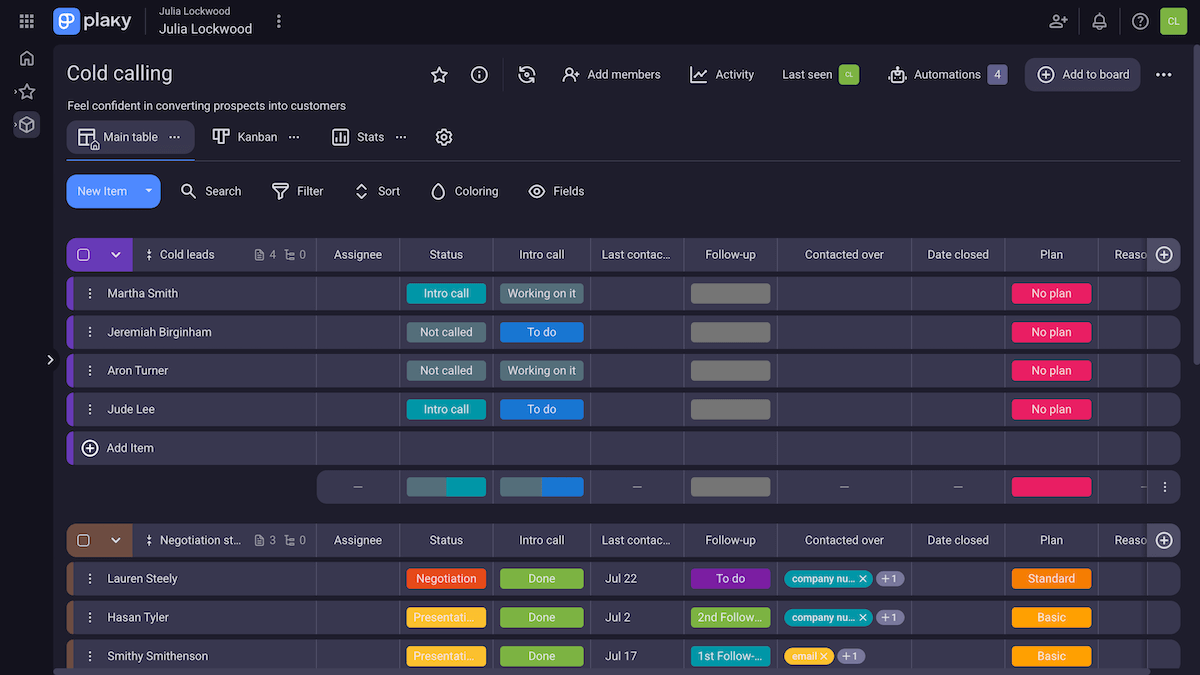

#3 Save time with automations
Now that you’ve got your board set up, you can further optimize your workflow with different useful features. The most important one we’ll talk about is automation.
With so many calls to make, you don’t want your sales team to be overwhelmed by constant responsibilities on the board.
So, you need a way to automatically change and adapt your board as they complete their work. This will both save time and your team from burnout over lots of tiny responsibilities.
For example, in Plaky, you can set up an automation that transfers items to different groups as your team changes the item’s status. This will help you track KPIs in the future, not to mention reduce the number of changes your team needs to make on the board.
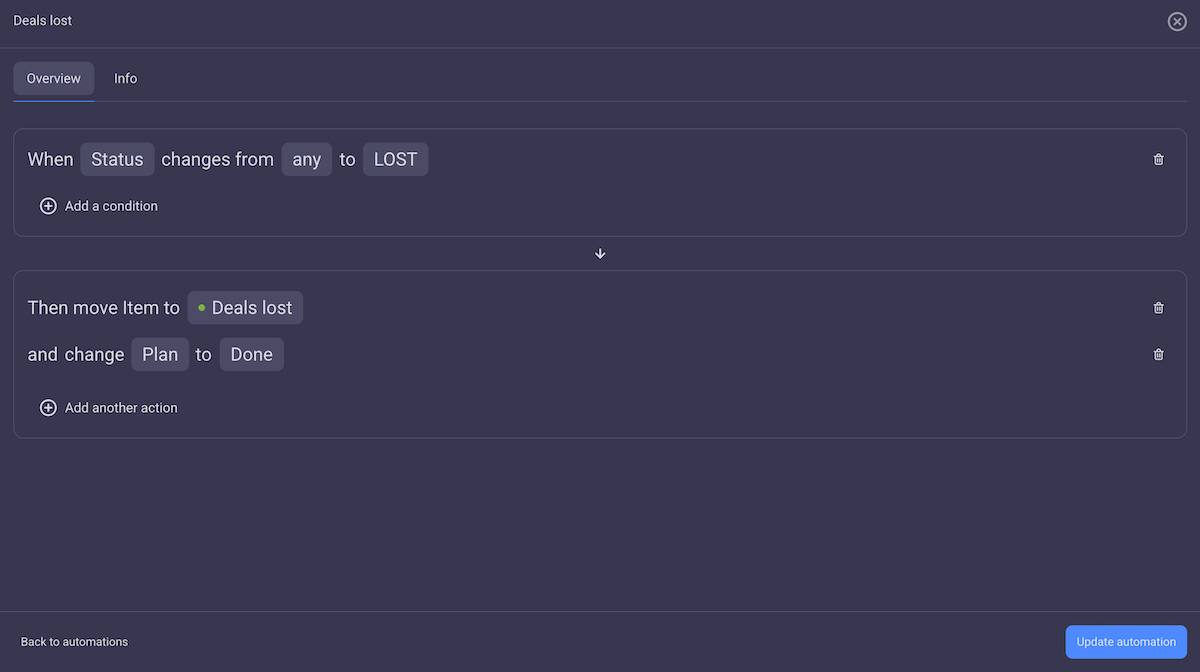
Automate your workflows in Plaky
#4 Track results with charts
With the right PM software, you can also use charts to track cold calling KPIs.
You’re dealing with a lot of information when reviewing past calls. So, you’ll need a clearer view of your results.
Any type of chart view should give you exactly what you’re looking for, e.g.:
- How many calls were successful,
- Whether the way you had contacted a customer influenced their decision to deny a proposal,
- How many clients are waiting on a follow-up, etc.
Charts make information easy to review. Then, you can implement future changes more effectively with that information in mind.
Remember, though: you want a chart feature that lets you filter, sort, and adjust your graphs according to any type of metric in order to effectively track KPIs.
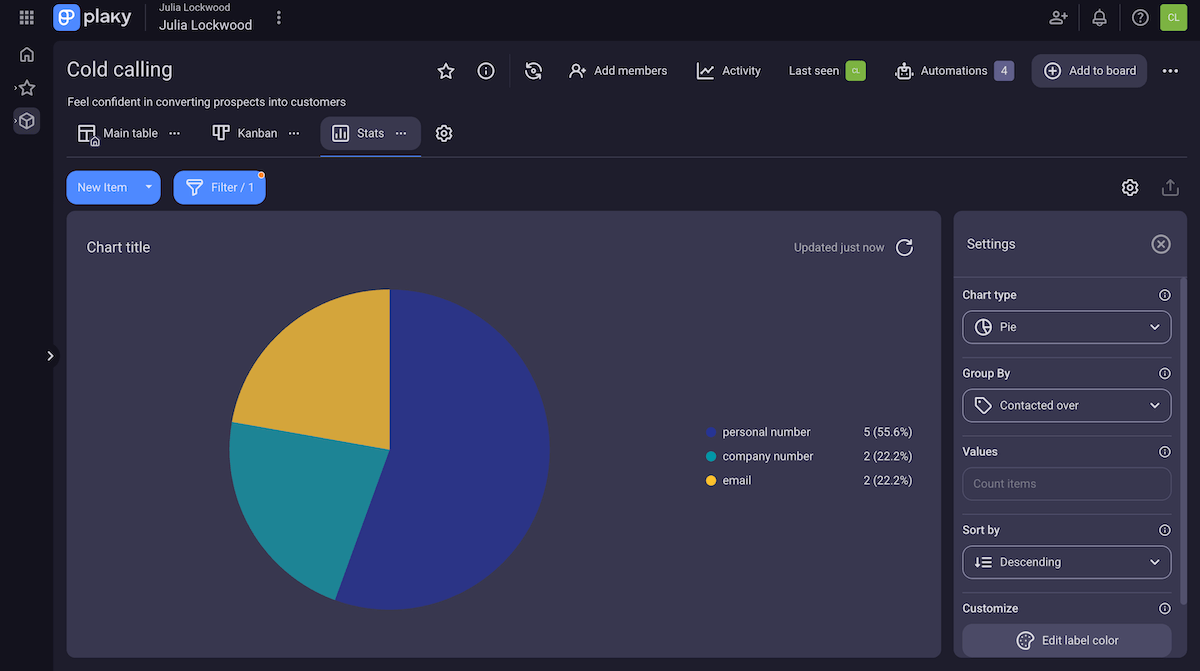
#5 Keep an eye on project health
Once you have your board fully set up, you need to make use of features that’ll help you keep an eye on project health as your team is making cold calls.
Some of the best Plaky features for this purpose are:
- Activity log — which will help you keep track of any changes made to items so that you’ll know, for example, when a client is moved to a different group,
- Summary row — which gives you a quick overview of an item group, e.g., how many clients in the negotiation group were contacted over email, and
- Kanban view — which provides you with a visual overview of task progress by status and lets you easily drag and drop tasks around.
These features help you make sure everything is flowing smoothly. And, if it’s not — they point to the exact issues you need to resolve to get your workflow back on track.
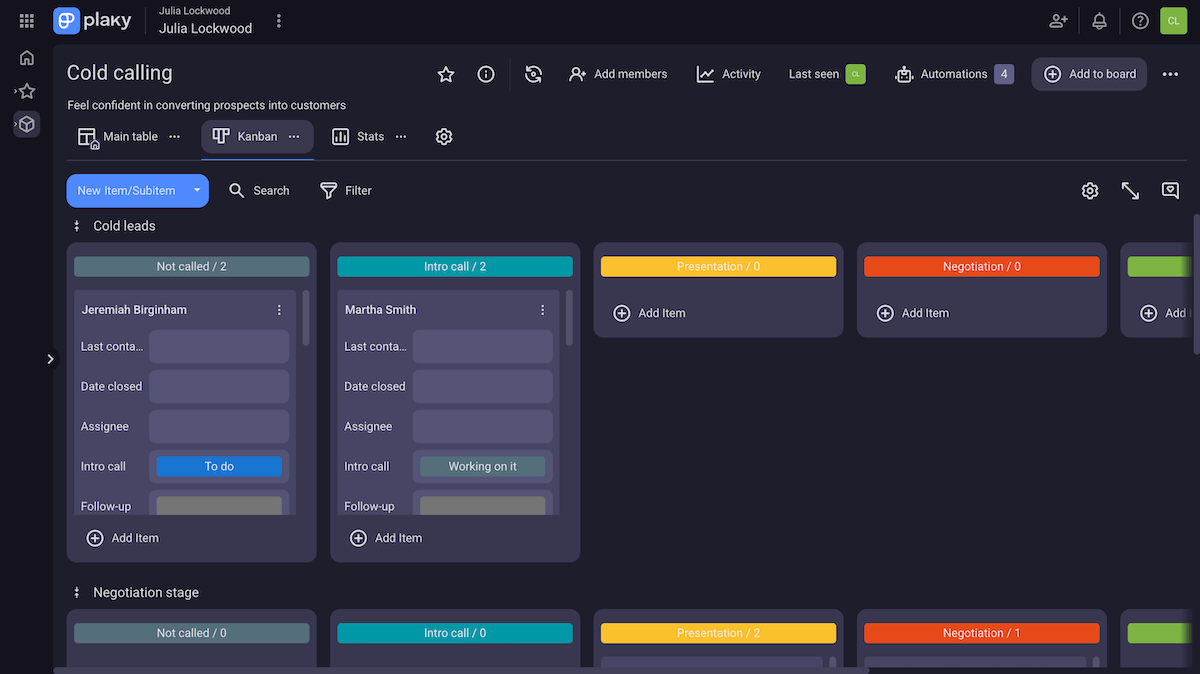
FAQ about cold calling
If you’d like to know more about cold calling, here are a few things you might be wondering about.
What is the best time to make a cold call?
In their 2025 report, Cognism analyzed over 204,000+ phone calls and found that the best time to make a cold call is between 10 a.m. and 11 a.m., while the second best time is between 2 p.m. and 3 p.m.
There are steep drops in response rates before 10 a.m. and after work hours.
The best day for cold calls is Tuesday, with the largest number of meetings booked after a conversation. The worst day to cold call is Monday.
When is cold calling legal and when is it illegal in the US?
In 1991, the Federal Communications Commission (FCC) passed the Telephone Consumer Protection Act (TCPA). This act outlined a national DNC (Do Not Call) list and made regulations for people who are not on that list.
If you want to make a cold call in the USA, you can only call between 8 a.m. and 9 p.m., you must introduce yourself and your company, and you have to explain the reason behind your call.
You mustn’t cold call any number from the DNC list.
There’s also the Telemarketing Sales Rule (TSR), which is almost the same as the TCPA, except it requires callers to keep their own DNC list, besides the national one. Any customer who says they don’t want to be contacted will be put on that list.
How many cold calls should a cold caller make per day?
The number of calls you should make each day really depends on the number of leads you have. Generally, the previously mentioned Cognism study shows that you have a large chance of at least getting a conversation during the first call.
Further, your chances of getting a conversation drop heavily as you go, and are near impossible after the 8th call to a specific client.
Based on the study, Cognism suggests 3 to 5 calls is the optimal number per client.
So, how many people should you call per day? Depends on the job and the day.
Generally speaking, multiply the number of people you should call by 3 to 5, and you’ll get the number of calls you should make.
Some companies ask for 80, some are content with 30. If you have 10 leads for the day, that means you’ll be doing 30 to 50 calls.
How is a PM tool different from a CRM tool?
A CRM tool functions as a database for tracking customer relationships, while a PM tool is best used for result and progress tracking in a cold calling operation.
CRM tools include features like:
- Lead tracking,
- Email tracking,
- Saving contact data,
- Creating invoices, etc.
On the other hand, PM tools help you out with:
- Progress tracking,
- Team collaboration,
- Scheduling,
- Assigning team members to leads, etc.
If you’re just starting out, it’s more urgent to organize your team and their schedule rather than your clients (you probably won’t have many at first, anyway). So, it’s best to start out with a PM tool and introduce CRM later on as you grow.
Optimize your cold calling workflow with Plaky
We talked extensively about how a PM tool can improve your cold calling process.
Through our example images, you could see how Plaky handles each of those questions perfectly. But, good features aren’t all you want in a PM tool.
Any team can struggle to adopt a change in their work process. However, onboarding a new tool doesn’t have to be long and difficult.
It’s a combination of having:
- The right training — If you want your team to onboard a tool well, you need to give them room to figure it out. So, dial down on work responsibilities for a bit.
- The right questions — You need to make sure your team understands why you’re using this tool, and how it will help them. This way, they’ll have more motivation to learn how to use it.
- The right tool — If you choose an easy-to-use PM tool, the onboarding process will be short anyway.
Luckily, Plaky offers one of the most intuitive UIs out there, which means your team will spend little to no time onboarding. This saves time, and — in sales especially — time is money.
That’s not the only way Plaky cuts your costs, though. It also offers:
- An extensive free plan — You get unlimited users, boards, and items. This makes scaling with Plaky easy, as it doesn’t force your costs to grow with your workforce.
- Affordable paid plans — Plaky’s paid plans are some of the most affordable on the market and offer some great upgrades, like board automations, additional custom fields, more extensive activity logs, and more!
Plus, you can try out the paid plan with a 14-day free trial. Then, take the results and calculate the ROI to see if Plaky is the right option for you.
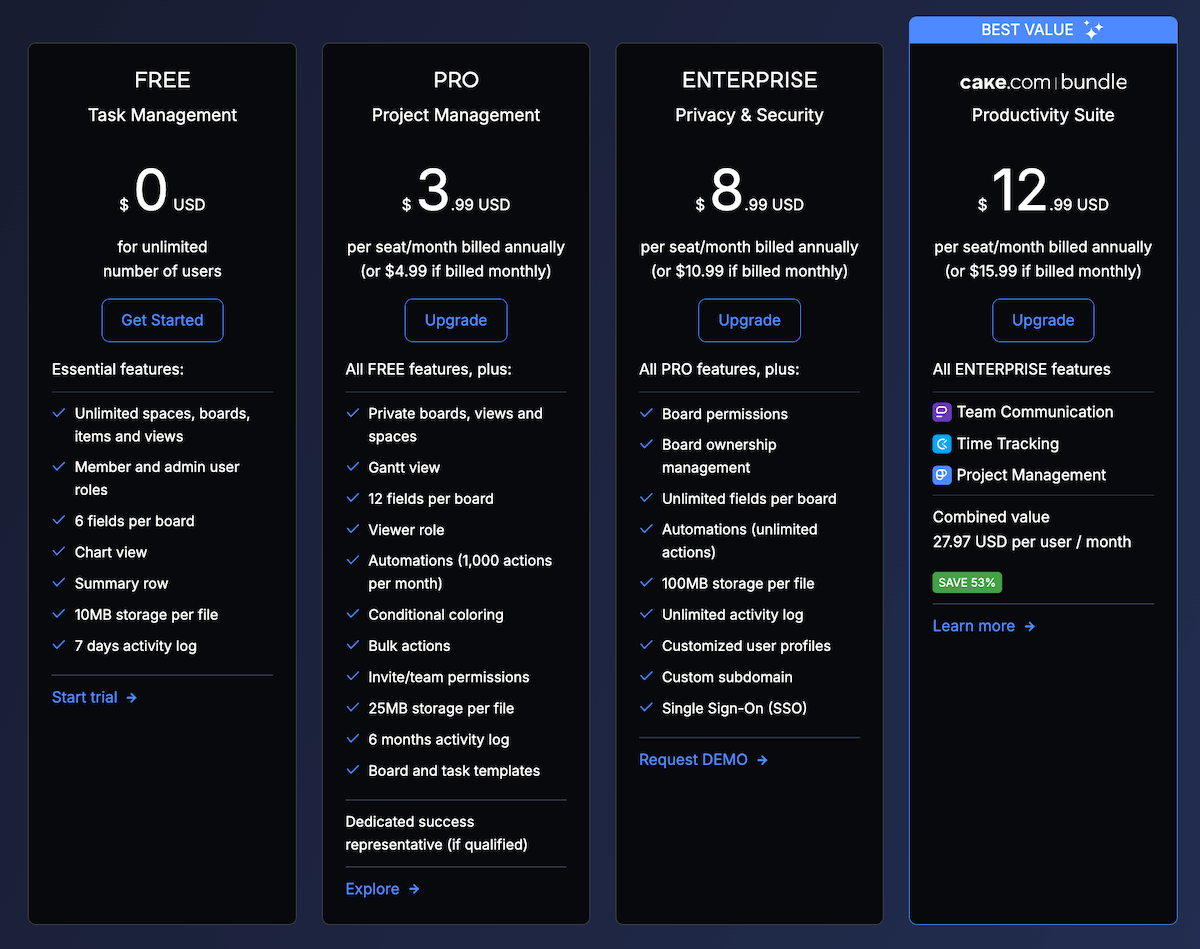
But don’t worry, as no matter which plan you choose, you get 24/7 customer support.
This means onboarding takes even less time with Plaky — and any questions you have don’t come with a price tag.
Make the right call for your cold calling workflow. Sign up for a free Plaky account today!
